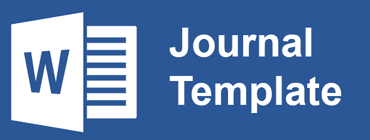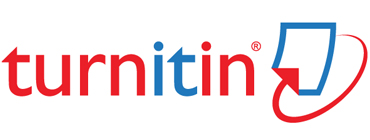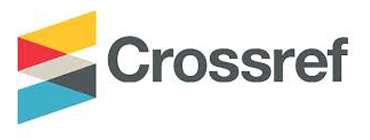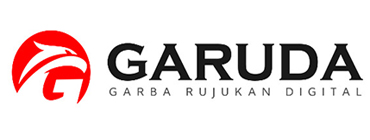AN ANALYSIS OF CODE-MIXING USED BY ENGLISH TEACHER IN CLASSROOM INTERACTION AT NINETH GRADE MTS ANAK BANGSA
Abstract
Full Text:
PDFReferences
REFERENCES
Abdul Majid. (2007). Learning Planning. Bandung: PT. Remaja Rosdakarya.
Abdullah, W. (2011). Indonesian-English Code Mixing in Speaking at Pesantren IMMIM Putri Pangkep. Sawerigading Journal Guidelines. 17(3), 375- 392
Afifuddin, Beni Ahmad Saebani, (2009). Qualitative Research Methodology. Bandung: Faithful Library.
Apriana, A. (2006). Mixing and Switching Languages in SMS Messages. Malang: State University of Malang.
Arifin, H.M. (1995). Capita Selekta of Islamic and General Education. Cet III; Jakarta: Bumi Aksara.
Arikunto, S. (2014). Research Procedures A Practical Approach. Jakarta: Rineka Cipta.
Azra, Azyumardi. (1998). Esei-esi Muslim Intellectuals and Islamic Education. Cet I; Jakarta: Logos Discourse of Science.
Bhatia, T.K., Ritchie, W.C. (2004). The Handbook of Bilingualism. United Kingdom: Blackwell Publishing.
Brown, H Douglas. (2001) Teaching by principles (An interactive approach to language pedagogy). Second edition. San francisco State University.
Brown, H. D. 1994. Principles of Language Learning and Teaching. 3rd edition.
Chaer, A. (2014). General Linguistics. Jakarta: Rineka Cipta.
Chaer, (2004). Practical Grammar of the Indonesian Language. Jakarta: Rineka Cipta.
Chairani. (2014). A Study of Indonesian-English Code Mixing in Facebook. Padang: Andalas University
Creswell, John W. (2012). Research Design Qualitative Approaches. Quantitative, and Mixed Approaches. Yogyakarta: Student Library.
Gardner-Chloros, P. (2009). Code Switching. New York: Cambridge University Press.
Hermianto. (2010). Basic Social and Cultural Sciences. Jakarta: Bumi Aksara.
Hoffman, C. (1991). An Introduction to Bilingualism. New York: Longman.
Indriyani, N. (2017). The Use of Code Mixing and Code Switching in the Learning Process at SMPN Ubung Pulau Baru. Journal Totobuang. 5 (2): 299-314
Iskandar, (2009). Qualitative Research Methodology. Jakarta: Gaung Persada.
Jabareen, Y. (2009). Building a Conceptual Framework: Philosophy, Definitions and Procedures. International Journal of Qualitative Methods. 8(4), 49-62.
Jeremy Harmer. (2007). How to Teach English. England: pearson Education Limited.
Kamwangamalu, N. (1989).Code-Mixing and Mordenization. Word English, 8(3), 321-332.
Krashen, S. (2013).Second Language Acquisition; Theory, Applications and Some Conjectures. Cambridge University Press: Mexico.
Kridalaksana, Harimukti. (2001). Linguistic Dictionary. Jakarta: PT Gramedia Pustaka Utama.
Lexy J. Moelong. (2010). Qualitative Research Methodology. Bandung: Teenage Workshop.
Lexy J. Moelong (2006) Qualitative Research Methods, Cet 2. Bandung: Teenage Workshop.
Maduwu, Byslina. (2016). The Importance of English Language Learning in Schools. Warta Edition 2.
Matthew B. Miles, at al. (2014). Qualitative Data Analysis: A Methods Sourcebook, Third edition. Arizona State University: United States of America.
Muri A, Yusuf. (2000). Introduction to Education Science III Edition. Jakarta: Balai Aksara.
Muysken, P. (2000). Bilingual Speech: A Typology of Code Mixing. Cambridge: Cambridge University.
Pranowo. (2014). Language Learning Theory for Teachers and Students of Language Departments. Yogyakarta: Student Library.
Romaine, S. (2000). Language is Society an. Introduction to Sociolinguistics. New York: Oxford University Press.
Salmawati. (2020). An analysis of code switching and code mixing in teaching learning process at SMA Negeri 5 Pinrang. IAIN Parepare.
Sardiman, A.M. 2011. Interaction and Motivation for Teaching and Learning. PT Raja Grafindo: Jakarta
Stockwell, P. (2022). Sociolinguistics: A resource Book for Students. Oxford: Blackwell
Sugiyono, (2008). Educational Research Methods. Bandung: Alfabeta.
Sugiono, (2009). Quantitative Qualitative and R&D Research Methods. Bandung: Alfabeta.
Sugiono, (2016). Quantitative, Qualitative and R&D Research Methods, 24th Printing. Bandung: Alfabeta.
Sugiono, (2018). Quantitative Research Methods, Qualitative R&D. Bandung: Alfabeta.
Sukardi. (2003).Educational Research Methodology. Yogyakarta: Bumi Aksara.
Supardi. (2014). Teacher Performance. Jakarta: PT Raja Grafindo Persada.
Syamsuddin Adalam in Prasetya. (2008). Studentstein Library in Catanese, 1992:318
Walliman, N. (2011). Research Method: The Basics. London: Rutledge Yumusak.
Wardhaugh, Ronald. (2006). Introduction to Sociolinguistics. Oxford: Basil Blackwell.
Refbacks
- There are currently no refbacks.

This work is licensed under a Creative Commons Attribution-NonCommercial-ShareAlike 4.0 International License.
INDEXING
Bright Vision by UIN Sumatera Utara Medan is licensed under a Creative Commons Attribution-NonCommercial-ShareAlike 4.0 International License.
Based on a work at http://jurnaltarbiyah.uinsu.ac.id/index.php/brightvision.









